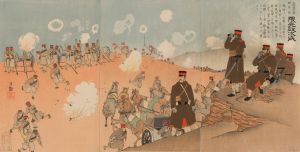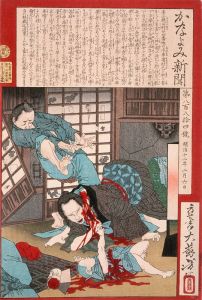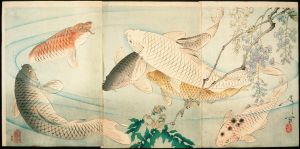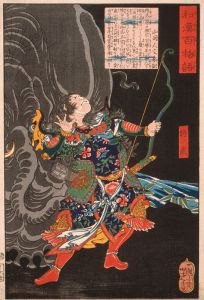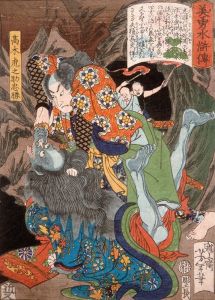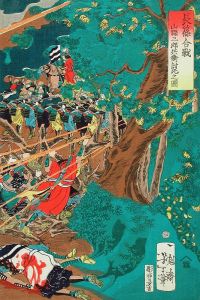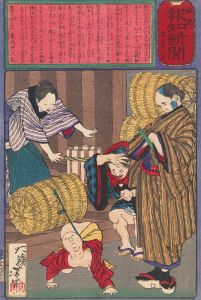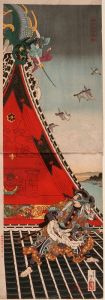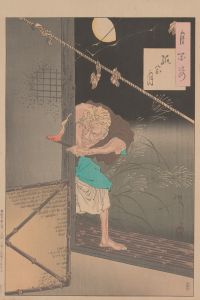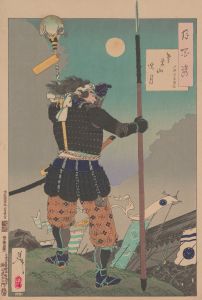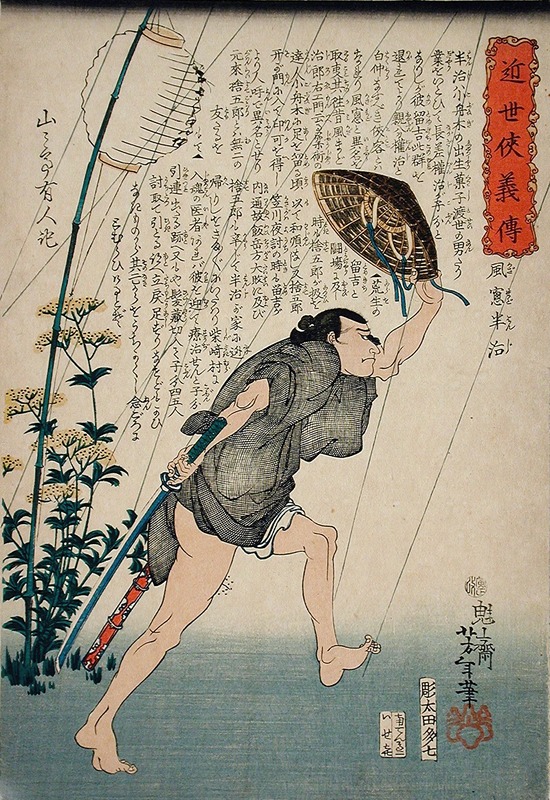
Kazamado Hanji in Light Rain
A hand-painted replica of Tsukioka Yoshitoshi’s masterpiece Kazamado Hanji in Light Rain, meticulously crafted by professional artists to capture the true essence of the original. Each piece is created with museum-quality canvas and rare mineral pigments, carefully painted by experienced artists with delicate brushstrokes and rich, layered colors to perfectly recreate the texture of the original artwork. Unlike machine-printed reproductions, this hand-painted version brings the painting to life, infused with the artist’s emotions and skill in every stroke. Whether for personal collection or home decoration, it instantly elevates the artistic atmosphere of any space.
Tsukioka Yoshitoshi (1839–1892) was a prominent Japanese ukiyo-e artist, known for his innovative and dynamic woodblock prints. One of his notable works is "Kazamado Hanji in Light Rain," which is part of his larger series that often depicted historical and legendary figures, capturing moments of drama and emotion.
Yoshitoshi lived during a time of great change in Japan, as the country transitioned from the Edo period to the Meiji era. This period was marked by the opening of Japan to the West and the subsequent modernization and industrialization of the country. Yoshitoshi's work reflects both traditional Japanese themes and the influences of these new cultural interactions.
"Kazamado Hanji in Light Rain" is a woodblock print that exemplifies Yoshitoshi's skill in portraying mood and atmosphere. The print likely depicts a scene involving Kazamado Hanji, a character or figure that Yoshitoshi chose to illustrate, possibly from a historical or literary source. The depiction of rain is a common motif in Japanese art, often used to evoke a sense of melancholy or introspection. Yoshitoshi's ability to convey the texture and movement of rain through the medium of woodblock printing demonstrates his mastery of the craft.
Yoshitoshi was known for his use of vivid colors and intricate details, which are evident in this print. His work often included a blend of realism and stylization, capturing the essence of his subjects while also imbuing them with a sense of drama. The use of light and shadow in "Kazamado Hanji in Light Rain" would have been carefully considered to enhance the emotional impact of the scene.
Throughout his career, Yoshitoshi faced numerous challenges, including financial difficulties and mental health struggles. Despite these obstacles, he continued to produce art that resonated with audiences both in Japan and abroad. His work is often credited with revitalizing the ukiyo-e tradition at a time when it was in decline, due in part to the rise of photography and other modern forms of media.
Yoshitoshi's legacy is significant, as he is regarded as one of the last great masters of the ukiyo-e tradition. His prints are celebrated for their technical excellence and emotional depth, and they continue to be studied and admired by art historians and enthusiasts around the world. "Kazamado Hanji in Light Rain" is a testament to his ability to capture the complexities of human experience through the art of woodblock printing.
While specific details about the narrative or context of "Kazamado Hanji in Light Rain" may not be extensively documented, the print remains an important example of Yoshitoshi's work and his contribution to Japanese art. His influence can be seen in the continued appreciation and study of ukiyo-e, as well as in the works of contemporary artists who draw inspiration from his innovative approach to storytelling through visual art.





